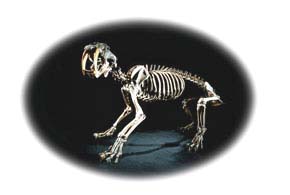This investigation will help you to:
What are species and sub-specific taxa?, University of Toronto
Visit this online library resource to obtain information on distinguishing organisms from one another. Learn the taxonomic identification beginning with species, continuing through subspecies, varieties, and forma. This site primarily focuses on the taxonomy of vascular plants.
The Precambrian and Vendian Mass Extinctions, Hooper Virtual Paleontological Museum
Learn about two mass extinction events that affected life's earliest organisms.
Mass Extinction, National Geographic
A brief discussion on mass extinction rates, human impact on extinctions, and the effects of endemic and introduced species.
Evolution and the Fossil Record, American Geosciences Institute (AGI)
Explore this online publication to learn more about evolution and the fossil record.
Taxonomy, Transitional Forms, and the Fossil Record, Kansas State University
Visit this site to learn more about the benefits and limitations of the fossil record.
Sequence Stratigraphy Terminology, SEPM
This university's web site offers an online glossary of terms, illustrations, and links related to stratigraphy.
Sequence Stratigraphy Animated GIFS, SEPM
This location provides animated GIF files describing various stratigraphic processes.
Index Fossils, USGS
Learn why index fossils are useful to stratigraphers in correlating relative time scale and view some of the most common index fossils through time.
Fossils, Rocks, and Time, USGS
Learn about the relative and numeric time scales, rocks and layers, fossils and rocks, and fossil succession.
Relative Time Scale, USGS
Visit this site to learn more about the human history of establishing the relative time scale for Earth history. Diagrams illustrate how strata are used as a scale.
Evolution and the Fossil Record, AGI
This online resource provides information on the absolute dating of rocks using biostratigraphy and radioactivity. It also offers graphys and pictures to aid your understanding of rock dating.
Relative Age Dating Using Fossils, Texas A&M University
A lesson using fossil data to determine relative ages of cores.

